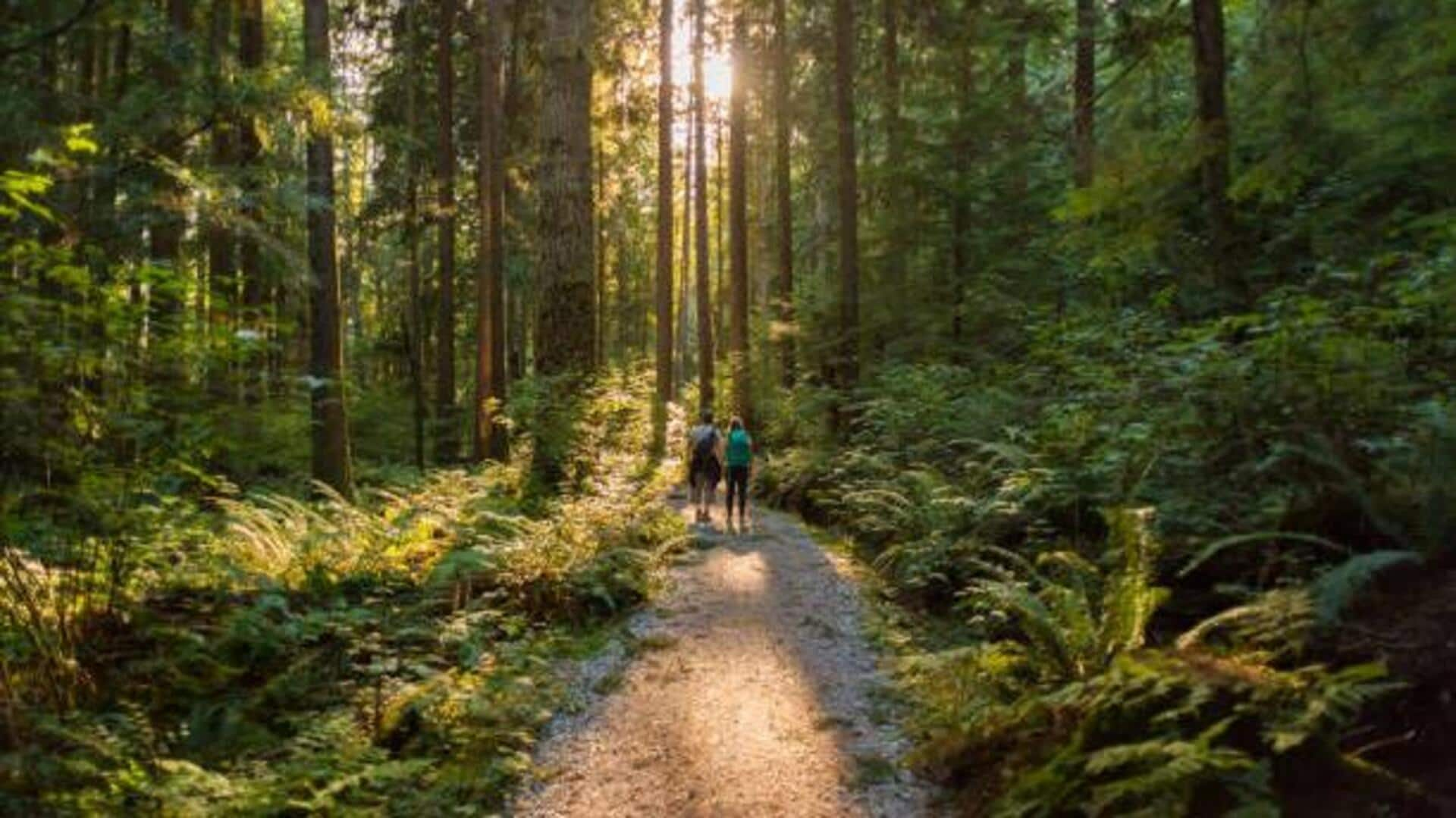
Hiking in Rwanda's Nyungwe Forest: A guide
What's the story
Exploring the hidden trails of Nyungwe Forest in Rwanda is a unique opportunity for adventure seekers. This ancient rainforest, one of the oldest in Africa, offers a diverse ecosystem and breathtaking landscapes. From trekking through lush vegetation to encountering rare wildlife, the forest promises an unforgettable experience. Here are some insights into navigating these trails and what makes them special.
#1
Discovering the ancient rainforest
Nyungwe Forest is one of Africa's oldest rainforests, dating back over 60 million years. Its ancient trees and diverse plant species make it a living museum of biodiversity. The forest covers an area of about 1,015 square kilometers and is home to over 300 bird species and several primate populations. Exploring this ancient ecosystem gives you a glimpse into Earth's natural history.
#2
Trekking through lush vegetation
The trails of Nyungwe Forest are well-marked and offer varying degrees of difficulty for hikers. From easy walks to challenging treks, there's something for everyone. As you make your way through dense foliage, you'll encounter a variety of flora, including orchids and ferns that thrive in the humid environment. The experience is enhanced by the sounds of chirping birds and rustling leaves.
#3
Encountering rare wildlife
One of the biggest draws of Nyungwe Forest is its rich wildlife population. Among the primates, the forest is home to several species, including chimpanzees and colobus monkeys. Guided tours give you a chance to see these animals up close while ensuring that their natural habitat is preserved. The sight of these creatures in their natural surroundings makes for an unforgettable encounter with nature.
Tip 1
Tips for a successful hike
To make the most of your hike in Nyungwe Forest, it's best to prepare well. Wear comfortable hiking shoes as some trails can be uneven or muddy. Carry enough water to stay hydrated during your trek, as there are limited facilities inside the park. Hiring a local guide can enhance your experience by providing insights into the forest's ecology and history, while ensuring safety on the trails.